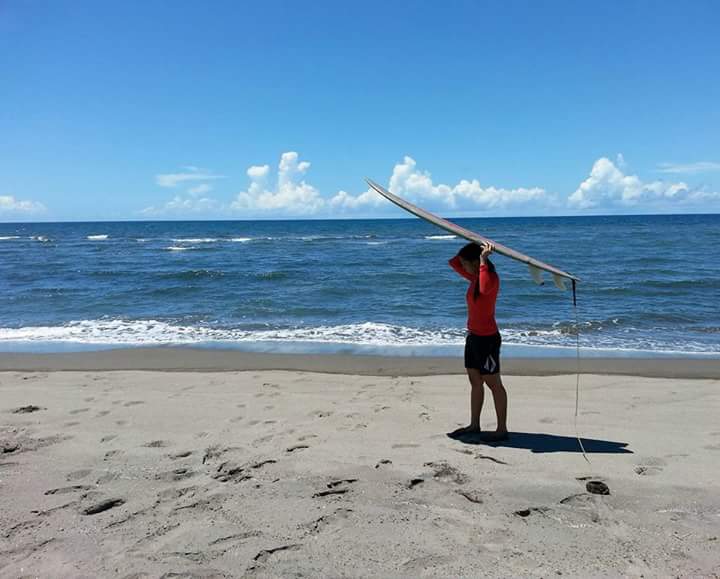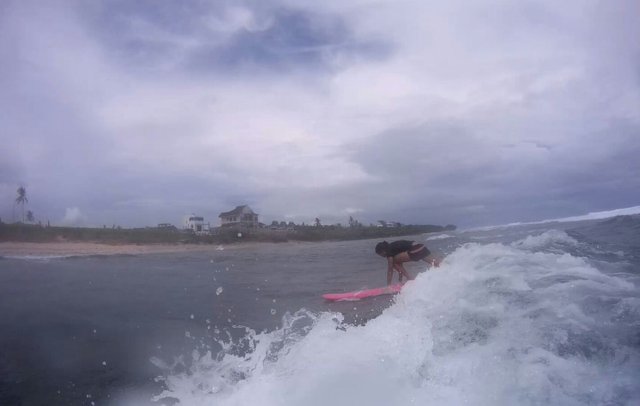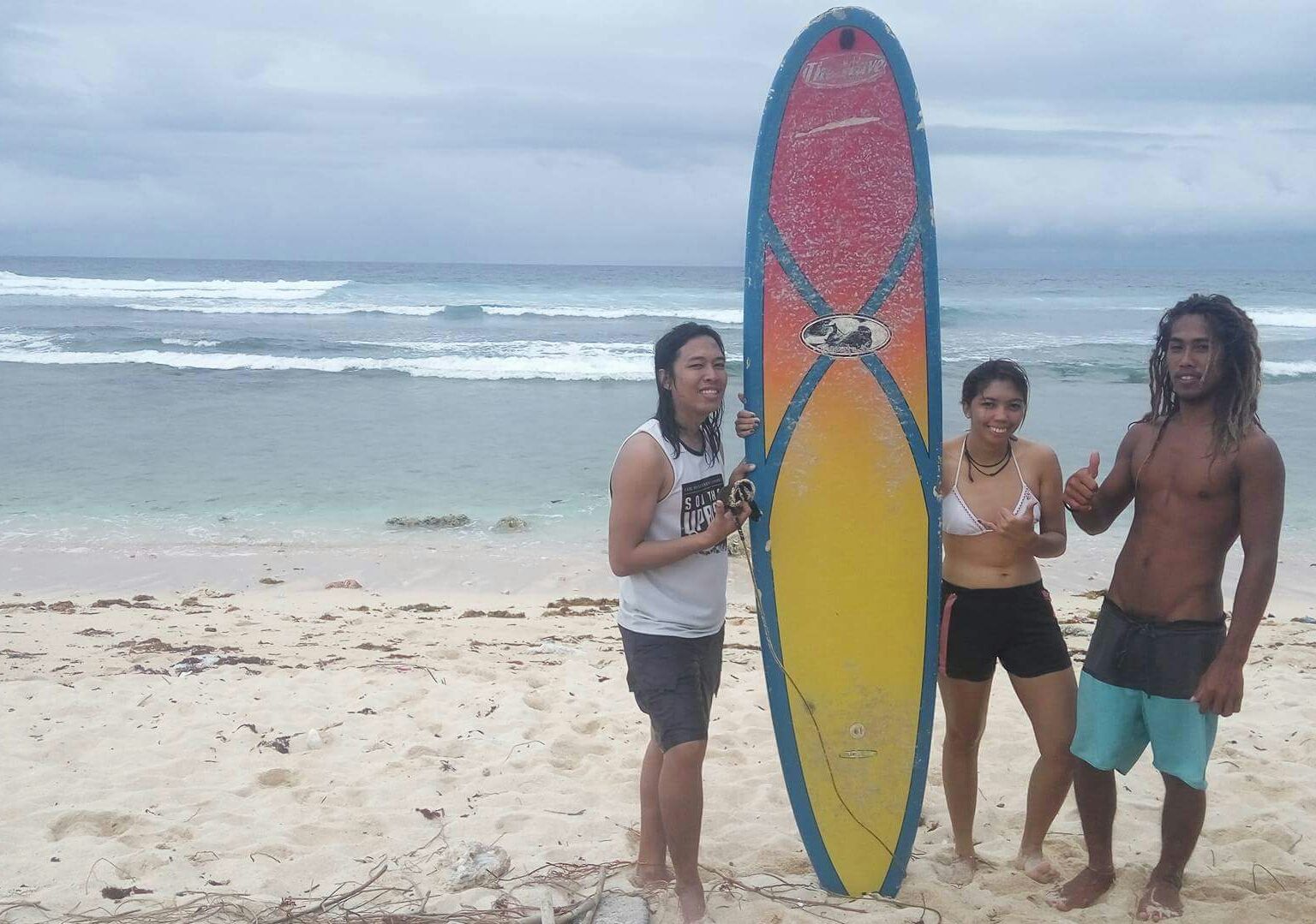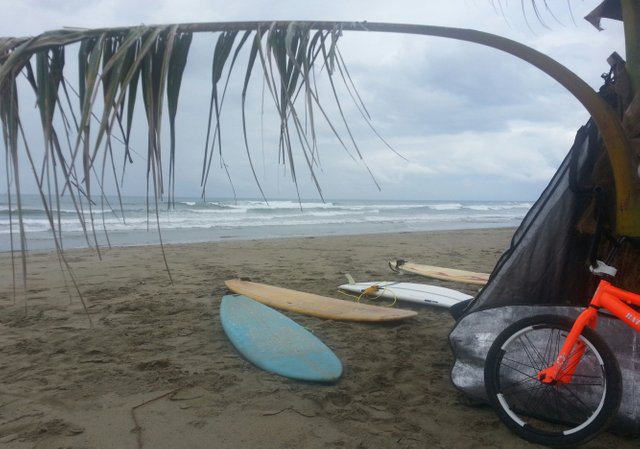Life in the Tropics 02: Surfing Against the Waves
When it's raining cats and dogs, and we have been warned with a typhoon alert, ordinary people would sit at home and watch a movie but the rugged, outdoorsy soul will keep yearning for adventure. First on the rainy season list: SURFING.
Where do you surf?
There are two types of surfing sites: the reef break and the shore break.
Reef break is where the swell (water moving upward forming a crestless wave) is broken by rocks or coral reefs in order to make breakwater that surfboards can ride. Most surfing spots in the Philippines that are on the border of the Pacific Ocean are reef breaks. Typically, waves are taller on reef breaks. One local surfer from Calicoan Island once told me that the waves can go as high as triple overhead.
Shore break on the other hand are sites where swells break on sandy shore. Waves are typically shorter compared to reef breaks as they only break because of the inclined sandy floor. Other sites like Sabang-Daguitan and Sipalay are shore break surfing sites.
How do you surf?
There is so much more technicality to surfing than I could describe here but simply, you need to at least know how to swim or thread on water if you want to try surfing.
Start out by determining your leg positioning. Natural stance means having your left foot forward and right foot backward on the surfboard. Goofy stance means the opposite. If you are not sure about your dominant stance, stand with your feet close together and ask a friend to push you forward. The leg that catches your fall or which steps forward first should be your forward leg. Wear the leash of your surfboard around the ankle of your back leg.
The surfboard has three basic parts: the nose which is the front part of the board, the tail which is the back part, and the fin which is the thin perpendicular protrusion at the bottom of the board that allows you to cut through the water.
When ready, lie on the surfboard with your chest against the board and such that your toes are touching just the edge of the surfboard on its tail part. Paddle using your arms towards the direction of the waves. Look out for the incoming swell and estimate the height and location of the breaks (when the swell starts to crest and forms fine white bubbles).
Position yourself at the location of the breaking waves and this time turn around such that the nose of your surfboard faces the shore. When an ideal swell comes drifting, paddle quickly and strongly forward to gain momentum just before the swell starts breaking. You know that you have caught the wave at its breaking point if you are being propelled forward by the wave itself. Once you start riding the wave, quickly rise to a kneeling position on your back leg while keeping balance on the board. If you feel more confident about the ride, continue to rise up to a standing position. An ideal stance would be your front leg at the center of the board and perpendicular to the sides of the board, and your back leg parallel to your front leg just about twenty inches apart.
You would usually start by riding the waves in the direction perpedicular to the shore but once you get the drift, riding parallel to the shore and along the breaking of the wave would look really cool. Like a pro surfer!
Surfing in the Philippines
I personally haven't been to top surfing spots in the Philippines but I will share with you three sites that I have visited in the past.
Sabang-Daguitan
Dulag, Leyte

Sabang-Daguitan used to be a closely knit surfing community with a small shack that housed both boards and surfers. Its surfing site is a shore break beach connected to a river mouth to the left side of the shack. The site is ideal for beginners as the waves do not typically go overhead and you get wiped out in shallow water so there is lesser risk of drowning.
Today, a local non-profit turned the peaceful community into a beach resort. The old surfer's shack was relocated to a nearby lot but the resort occupied the entire beach front. You can choose to rent surfboards and hire a surfing instructor from the resort or from the surfer's shack. I would always choose the latter.
Surfboard rental per hour - 300 php
Instructor per person per hour - 300 php
To get there just take a jeepney from Tacloban City bound for Dulag. Once you are at Dulag market, hire a motorcycle to take you to Sabang-Daguitan Surf Camp.
ABCD Camp, Calicoan
Sulangan Island, Guiuan, Eastern Samar

Calicoan is a reef break spot whose entire stretch of beach faces the Pacific. It is one of the country's premier surfing destinations but surprisingly, very few people know about it. The waves could reach overhead so swimming and fighting your way through the current is very important.
There are a couple of surfer's shack around Calicoan but the most accessible is the one at ABCD Beach. They have huts that you can rent and a camping ground to pitch your tent.
Huts rental - 250 to 500 php
Surfboard Rental per hour - 300 php
Instructor per person per hour - 300 php
To get there, take a van from Tacloban City bound for Guiuan. Once you have arrived in Guiuan, ask for directions to the jeepneys bound for Sulangan Island.

Sipalay Public Beach
Sipalay City, Negros Occidental
Sipalay is a quiet little town in the south of Negros Island that is blessed with rich marine life. When the wind blows the right direction, the waves would break to the shore allowing surfers to have a bit of fun. Habagat season which is the southwest monsoon allows for best surfing conditions in the months of July to December.
There are no surfing shops in Sipalay so bring your own board!
Sipalay is accessible by bus via Bacolod City or via bus and ferry from Cebu City.

I do not personally claim to be a pro surfer but I have tried to put myself in wipeout's way a couple of times now. What I have shared here is based purely on experience and not in any professional or formal training.
Have you gone surfing elsewhere? I would love to here about your experiences!
!steemitworldmap 9.756197 lat 122.397416 long Sipalay Public Beach d3scr
!steemitworldmap 10.928969 lat 125.034934 long Sabang-Daguitan Surfcamp d3scr
!steemitworldmap 10.967199 lat 125.831668 long Calicoan Surfcamp d3scr
If you like more adventure stories in tropical Philippines, follow my blog series "Life in the Tropics".
Thanks for your time!
Cheers,
@xaydtrips
Teach me one day @xaydtrips!
Sure @ybanezkim26! This is why we need the financial freedom soon 😁
Wait, naa diay meet up sa Lapu-Lapu this Sunday. Mactan Newtown at 7 PM. I haven't met these people yet. Wanna tag along? Kuyog ta ninyo. It's a way of expanding your reach.
Congratulations, Your Post Has Been Added To The Steemit Worldmap!
Author link: http://steemitworldmap.com?author=xaydtrips
Post link: http://steemitworldmap.com?post=life-in-the-tropics-02-surfing-against-the-waves
Want to have your post on the map too?
Add the following inside your post:
!steemitworldmap xxx lat yyy long description d3scr
(replace xxx and yyy with latitude and longitude)
@originalworks
The @OriginalWorks bot has determined this post by @xaydtrips to be original material and upvoted it!
To call @OriginalWorks, simply reply to any post with @originalworks or !originalworks in your message!
I also want to go on my trip. Not so long ago I made myself an update in the form of a new surfboard from https://easy-surfshop.com/ and now I want to go to the Caribbean to try it out